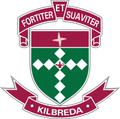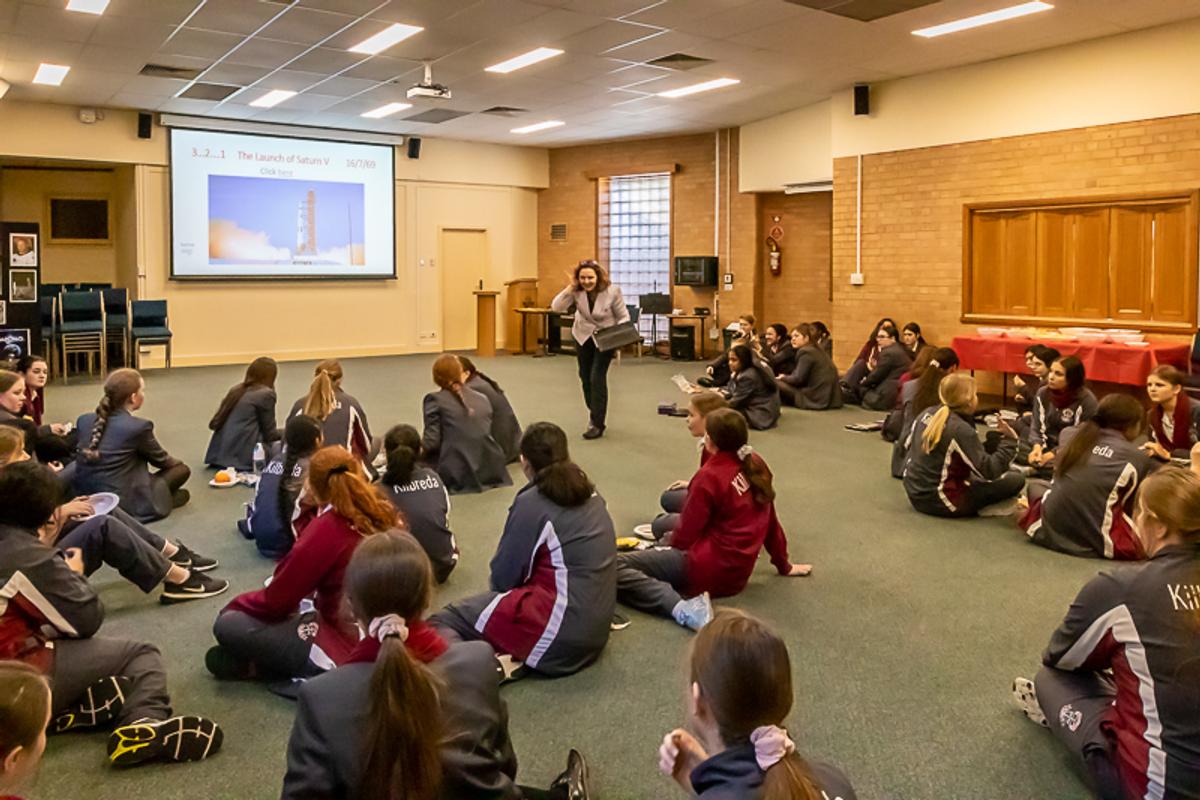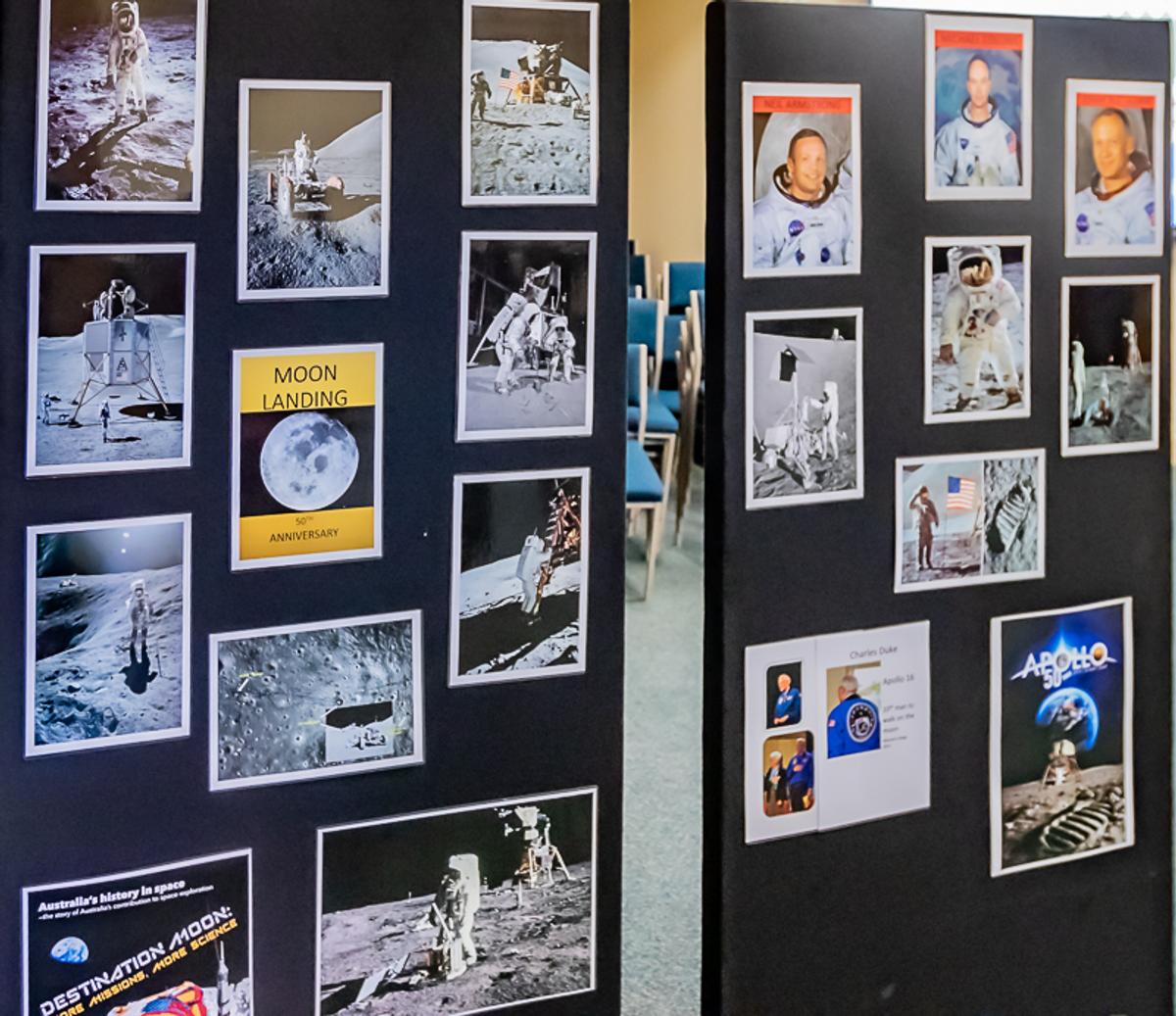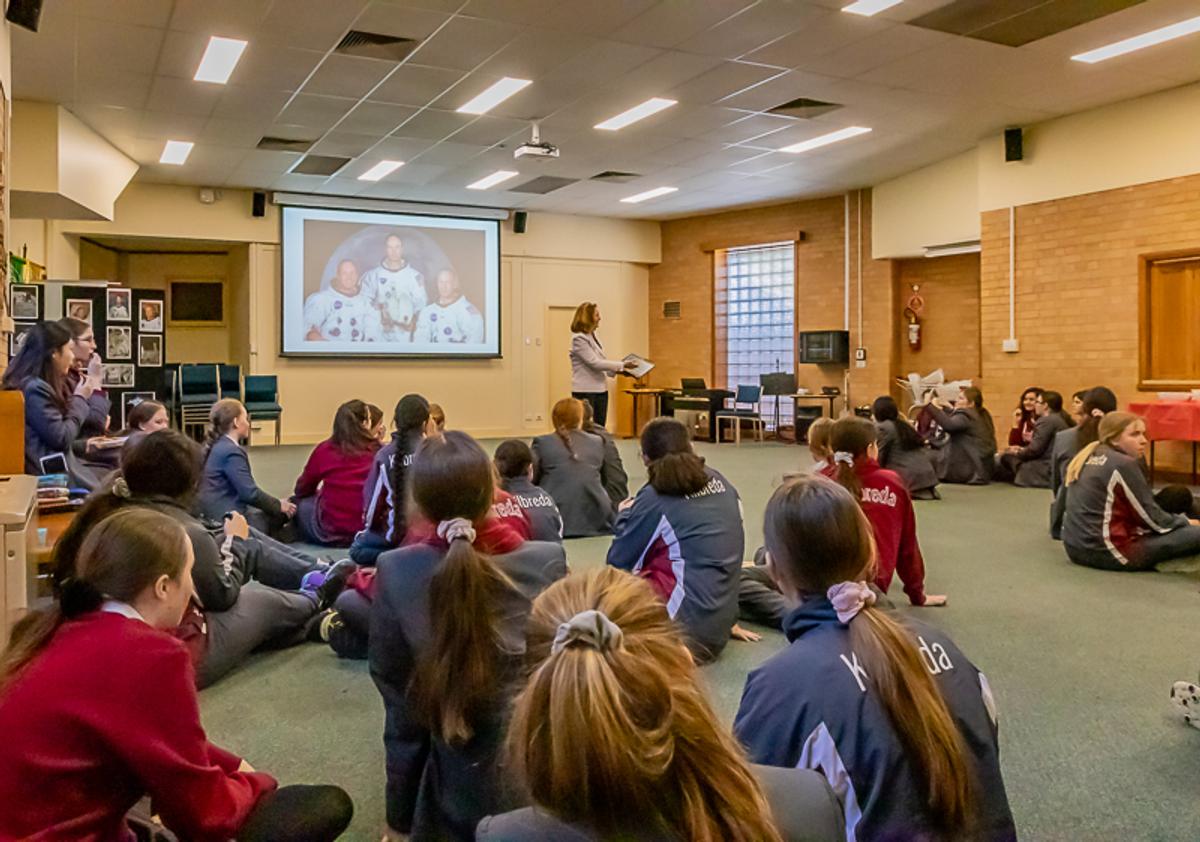Science
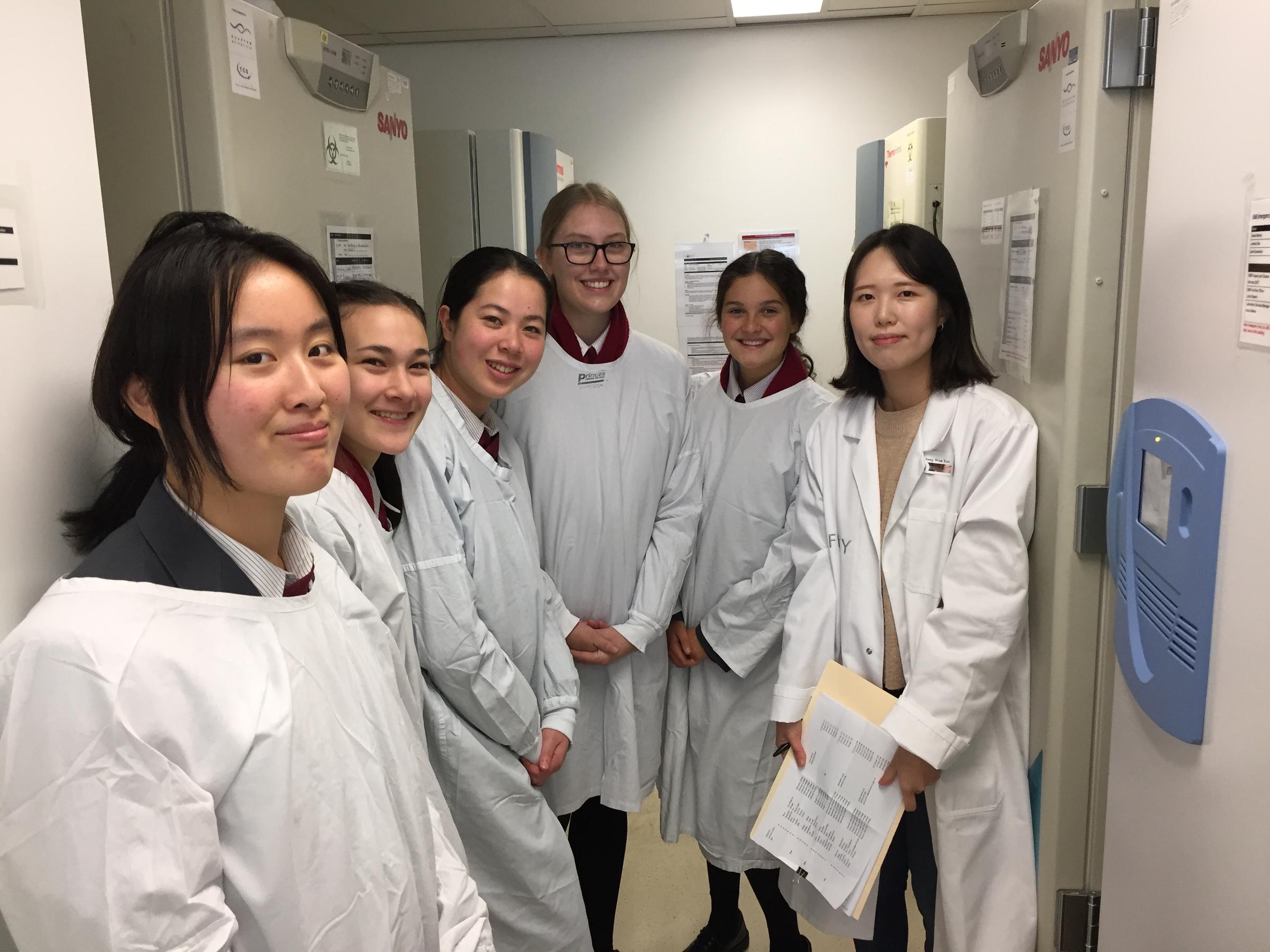
50th Anniversary of the Apollo 11 Moon Landing
This week, people around the world have celebrated the incredible feat of successfully sending human kind to the Moon; exploring its surface and very importantly, safely returning to Earth. Two Australian tracking stations, Honeysuckle Creek, south of Canberra and Parkes, NSW received the radio transmission from Apollo 11 that was beamed to the half a billion people watching on. In taking on the challenge of launching to the Moon, Neil Armstrong, Edwin “Buzz” Aldrin and Michael Collins took on enormous risk in making the journey. Click here to view a short ABC digital presentation that shows the tension and clear danger in the moments before landing.
In addition to the work of courageous male scientists and astronauts was the vital work of many women involved in the Apollo missions. Click here for an article about female engineers and the human computers immortalized in the film “Hidden Figures.”
To celebrate this occasion, we held “Moon Day” at Kilbreda in which we relived some moments from 50 years ago and students participated in a Kahoot of facts about the Moon. Of course, some cheese and moon themed biscuits went down well also! Thanks to Coralene Crawford for preparing images on display and to Kim Elliott for generously sharing with us three 50-year-old newspapers chronicling the event. Staff were invited to share their memories on what they were doing when the lunar lander touched down on the Moon. Many thanks to all of the staff who have shared their memories below. It was a momentous occasion that proved that the sky is the limit.
“What was I doing when Apollo 11 landed on the Moon”?
“I was in Grade 6 at Mount Carmel’s College in Middle Park where our teacher, Brother Costello for the first time ever took out the television set from the presbytery and we watched the Apollo moon landing. In the afternoon I was able to buy a model of the Apollo Lunar craft from an Ampol Service station.” Tony Grosso
“I remember it really well. My 10th birthday was in July and I was given ‘everything you need to know about the moon landing’ kit. So, I tracked the progress of Apollo from lift off with my kit; where it was everyday. On the day of the moon landings and first steps on the moon, I can remember watching our little black and white tv with my family, (sitting with my brother on the settee) all engrossed and enthralled by it all!”
David Lear
“I was in Grade One at St John Vianney’s and we were all taken into the multi-purpose room to watch the event on the school television. The televisions then were only in black and white and they were a lot smaller than these days so I don’t think the vision was very clear. But my memory of the whole school being squashed in together for the occasion is still quite clear. It was a BIG event.
Twenty years later I was teaching a Grade One class myself and told them about this big event that happened when I was in Grade One. I explained about the black and white television and one student asked, “Was there any colour in the world back then?”
Bernadette Kean
“I was in Grade 5 and all children were sent home from school for the afternoon to watch the moon landing on TV. We had only owned a television for a short period and it was rarely turned on (Dad would watch the news, but we seven kids were never allowed to touch it). I sat and watched for a while with all the family, but was pretty young and not really able to grasp the significance of the event. I watched as Neil Armstrong spoke the immortal words “That’s one small step for man” etc, then ran outside to play!”
Brian Ellett
“I was in Grade 1 in 1969 and this was one of the very few times that a large television was wheeled into the classroom - (black and white of course – although that probably doesn’t matter too much as the film WAS shot on the moon…). I have very strong memories of borrowing some moon books from our local public library and reading them - well, maybe looking at them; – I was a very slow reader. Much of that ‘reading’ was done after I had been tucked in and was meant to be asleep. Yes – I read with a torch under the blankets. I was a bit frightened by the need to have lots of blood tests (didn’t like needles even then) but I thought that the centrifuge machine that they used in training to become accustomed to high g’s looked kind of ‘manly’ and was a GOOD thing! I was pretty sure that being a spaceman would be a good job. A bit later – probably in grade 3 as I was in the Big School – one of the boy’s parents had been involved in the NASA project and his father brought in a moon rock – I thought ‘that is pretty cool’ although I would not have used that phrase at the time. I was all for people collecting rocks as that is what my father did as a hobby! That is about it – I am not sure if I would pass the ‘physical’ now. Also I do not speak Russian which is a pre-requisite for visiting the International Space Station…”
Angus Pearson
“I watched it on a tiny black & white telly in a very overcrowded classroom in a very overcrowded Catholic school in Brunswick, all classes jammed into one room to see this event.”
Carmel Fraser
“My class went to the principal’s house to watch the landing live.”
Steve Nash
“I was 2 ½ years old, and at home with mum. We lived on Newlands Road Coburg at that time. Mum was a stay at home mum, and busy doing the housework at the time.
I remember her sitting me down on the floor in front of the large wooden cabinet TV, telling me there were men on the moon. I can remember seeing fuzzy white shapes bobbing about on the screen, and mum stopped the housework to watch.”
Jo Hilliard
“I was in primary school in a small NSW town (I won’t say what year!) and if we lived close to the school, as I did, we were allowed to walk home to watch the moon landing on TV with our families. Back at school, teachers (all of them nuns) rolled out big television sets on wheels into classrooms and students clustered tightly together on the floor and at desks to watch in black and white of course. At home I must admit I was a bit bored and just took it as an opportunity to play outside my house till it was all over and I had to return to school. Many years later I became much more aware of the incredible feat that was man’s first step onto the moon. To this day, it still amazes me!”
Felicity O’Malley
“I was in Yr 9 at an all boy’s school in Brisbane and we had the whole day off classes so we could watch the moon landing live. We were ‘over the moon’ about that. Several classes were combined to sit in cramped conditions gathered around a few black
Brain Bee Challenge
On 17 July, five Year 10s travelled to The University of Melbourne for the Victorian State Final of the Brain Bee Challenge. The Brain Bee Challenge is a global competition which focuses on the future of neuroscience (the study of the brain and the nervous system) and aims to find a Year 10 student from Victoria to represent Australia in the National Finals of the competition.
The five of us (Kara Miwa-Dale, Samantha Xu, Shawnee Balogh, Skye Zhu-Maguire and Sophia Bryant) were lucky enough to advance through the first round, which was an online quiz, to the State Final round.
When we arrived at The University of Melbourne, we entered the auditorium where we would be spending most of the day for the challenge and some lectures. First, we were introduced to keynote speaker, Professor Mary Galea, who spoke to us about spinal cord injuries and her research on spinal cord nerve rehabilitation. Then the real business of the day began with Round 1 of the Brain Bee Challenge, The Team Challenge! The Kilbreda Team (Skye, Shawnee, Samantha and Kara) competed against all of the other schools from Victoria in a 15 question quiz about the structures and functions of the brain and nervous system. We found that the questions were very challenging, but we managed to get some questions right!
After the team challenge, we all participated in the individual challenge which consisted of a 30 question short answer quiz on the structures and functions of the brain and nervous system. Again, the questions were very challenging, and although we all tried our best, no Kilbreda student managed to make it into the final eight.
Following our team and individual challenges, we were given a tour of one of the neuroscience research labs. The tour was led by a PhD Neuroscience student in her second year of her PhD degree, specialising in research on Multiple Sclerosis.
Upon arriving at the lab we were required to put on those funny white gowns you see doctors wear in hospitals, before entering. Our tour guide showed us some samples of her research using rats. She showed us a tiny rat brain cut into slices on a glass slide, which was kind of gross but amazing!! She also showed us the massive fridges which contained all the animal brains used for research, which are kept at -80०c!
We were also lucky enough to explore the DAX Gallery, a small art exhibition displaying work created by people who had suffered mental health conditions. The artwork was created by people with schizophrenia, depression, autism, PTSD, bipolar disorder and more. Each piece was different from the next, all unique to the patient, whose art portrayed their suffering, treatment or inner thoughts and feelings they felt they could speak publicly about.
We were also given the opportunity to gain insight into the works of Associate Professor Bang Bui, who explained to us how the blood vessels in our eyes are able to show the health of our entire bodies, organ systems and any diseases (such as diabetes or hypertension) which a person may be experiencing. Following this, Dr Carli Roulston, spoke to us about her work in stroke research and how she uses mice to simulate the effects of stroke and stroke rehabilitation techniques in an urge to discover and possibly integrate new therapies for stroke victims into hospitals and clinics.
Overall, we all thoroughly enjoyed our experience at The University of Melbourne and we are all very grateful that we were given this opportunity, it will be one we’ll never forget.
A special thank you to the organisers of the Australian Brain Bee Challenge and to Mr Gurowski and Mrs Caroll for supervising and supporting us.
Brain Bee Participants
